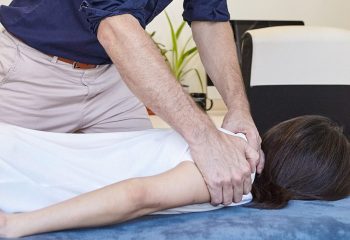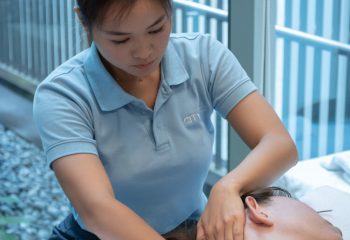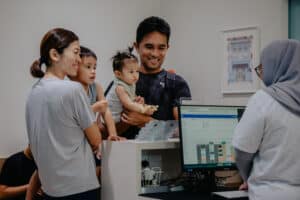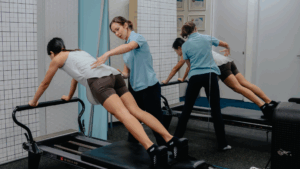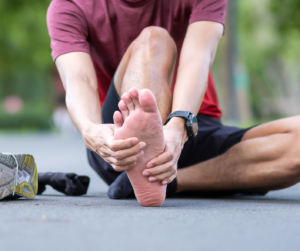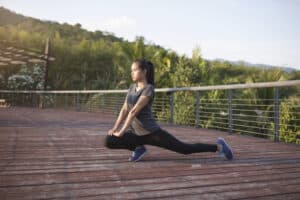As parents, ensuring the health and wellbeing of our children is a top priority. When it comes to healthcare options, it’s important to explore holistic approaches that address the root causes of issues and promote overall wellness. Osteopathy is one such approach that can benefit children in numerous ways. In this blog post, we will delve into the world of osteopathy for kids, discussing what it is, its benefits, and how it can address common issues in children. From musculoskeletal problems to sleep disorders, osteopathy offers a safe and effective alternative for children’s healthcare needs.
 What is osteopathy?
What is osteopathy?
Osteopathy is a branch of healthcare that focuses on the diagnosis, pain relief, and prevention of disorders through non-invasive manual techniques. Osteopaths emphasise the body’s self-healing abilities and consider the interrelationship between the body’s structure and function. They aim to restore balance, improve mobility, and enhance overall health and wellbeing.
Osteopathy differs from other medical approaches as it takes a holistic approach to healthcare. Osteopaths consider the whole person, not just the symptoms or specific condition. They look at the body as an integrated unit and address the underlying causes of health issues rather than just the symptoms.
Why see an osteopath for kids?
Children can benefit greatly from osteopathy due to its gentle and non-invasive nature. Osteopathy can address a wide range of issues in children, including:
- Musculoskeletal problems: Children may experience musculoskeletal issues such as postural imbalances, growth-related pains, or sports injuries. Osteopathic techniques can help relieve pain, improve joint mobility, and promote proper alignment.
- Digestive issues: Many children experience digestive problems such as colic, reflux, or constipation. Osteopathy can help alleviate these issues by addressing the underlying causes, such as tension in the abdominal muscles or misalignments in the spine.
- Sleep disorders: Sleep disturbances can significantly impact a child’s health and wellbeing. Osteopathy aims to identify and address factors contributing to sleep disorders, such as tension in the body, nervous system imbalances, or respiratory issues.
The non-invasive and drug-free nature of osteopathy makes it particularly suitable for children. Osteopathic sessions are gentle, safe, and tailored to the child’s specific needs, ensuring their comfort and well-being throughout the session.
What to expect during an osteopathic session for kids?
During an osteopathic session for children, the osteopath will begin by taking a detailed medical history and conducting a physical examination. This helps them understand the child’s condition, identify any areas of concern, and develop a personalised pain management plan.
Osteopathic techniques for children are gentle and vary depending on the child’s age and specific needs. The osteopath may use techniques such as gentle joint mobilisations , soft tissue massage, cranial osteopathy, or visceral manipulation. These techniques aim to relieve tension, improve circulation, enhance the functioning of organs, and promote the body’s self-healing abilities.
Parents may have concerns about the safety and effectiveness of osteopathy for children. It’s important to note that osteopaths are highly trained professionals who have undergone rigorous education and clinical training. They understand the unique needs of children and adapt their techniques accordingly. Osteopathy is considered safe for children when practised by qualified professionals.
Common conditions addressed by osteopaths for kids
Osteopaths can address a wide range of conditions in children. Some of the common conditions managed by osteopaths include:
- Colic and reflux: Osteopathy can help relieve digestive discomfort in infants, such as excessive crying, fussiness, or regurgitation.
- Torticollis: Osteopathic techniques can assist in resolving torticollis, a condition characterised by limited neck movement or a tilted head position.
- Developmental delays: Osteopathy may aid in supporting a child’s development by addressing any underlying musculoskeletal imbalances or restrictions.
- Asthma and respiratory issues: Osteopathic techniques can help improve respiratory function, reduce tension in the chest, and enhance overall breathing patterns.

Benefits of paediatric osteopathy
The benefits of osteopathy for children are extensive and encompass various aspects of their health and wellbeing. Some key benefits include:
- Enhanced musculoskeletal health: Osteopathy promotes proper alignment, joint mobility, and muscle balance, reducing the risk of musculoskeletal problems and supporting healthy growth.
- Improved digestive function: Osteopathy can help alleviate digestive issues by addressing the underlying causes and promoting optimal functioning of the digestive system.
- Better sleep quality: By addressing factors contributing to sleep disturbances, osteopathy can help children experience more restful and rejuvenating sleep.
- Emotional well-being and stress management: Osteopathy aims to restore balance in the body, which can positively impact children’s emotional well-being and help them manage stress more effectively.
Choosing the right osteopath for your child
When it comes to the health and well-being of your little ones, finding qualified and experienced practitioners is of paramount importance. It’s essential to consider their qualifications, experience, and expertise in helping children. Here are some tips to help you choose the right osteopath:
- Check credentials: Ensure that the osteopath is registered and licensed to practice. Look for relevant qualifications and certifications.
- Read reviews and recommendations: Read reviews or seek recommendations from trusted sources to gain insights into the osteopath’s reputation and patient satisfaction.
- Open communication: Choose an osteopath who communicates openly and listens to your concerns. A good osteopath will involve parents in the pain management process and provide guidance and support.

City Osteopathy & Physiotherapy is highly recommended when seeking osteopathic care for children. With our team of highly skilled and dedicated practitioners, we prioritise thespecific needs of our paediatric patients, providing gentle and effective treatment options. Our practitioners have extensive training and experience in working with children, ensuring that each session is tailored to the unique requirements of young bodies. By combining our expertise with a compassionate and child-friendly approach, we create a safe and comfortable environment for kids to receive the care they need. Whether we are addressing musculoskeletal issues, promoting optimal development, or supporting overall health, choosing City Osteopathy & Physiotherapy for your child’s osteopathic needs is a decision that will bring you peace of mind and the best possible care. Read more about our osteopathic approach here.
Unsure which practitioner will be right for your little one? Shoot us a Whatsapp and our knowledgeable team will help you find your perfect match.
Frequently asked questions about seeing an osteopath for kids
What age range is suitable for seeing an osteopath for kids?
Osteopathic care for kids can be beneficial across a wide age range. Osteopaths are trained to work with patients of all ages, including infants, toddlers, children, and teenagers. From newborns experiencing birth-related strains to adolescents dealing with sports injuries or growth-related issues, osteopathy can offer valuable support and therapies. The techniques used by osteopaths are gentle and non-invasive, making them suitable for children of various ages and developmental stages. It’s important to consult with an osteopath who specialises in paediatric care to ensure that the treatment is appropriate and tailored to the specific needs of your child.
Find out how osteopathy can help each age group here.
How many sessions are usually required for paediatric osteopathy?
The number of sessions required depends on the child’s condition and response to the therapies. Some issues may be resolved in a few sessions, while others may require ongoing care. Book a consultation with our paediatric specialists to receive tailored advice on your care duration.
Is osteopathy painful for children?
Osteopathic techniques for children are gentle and non-invasive, aiming to provide comfort and relief. Children usually find the sessions relaxing and enjoyable.
How long does a typical paediatric osteopathy session last?
The duration of a typical paediatric osteopathy session can vary depending on several factors, including the age of the child, the specific condition being addressed, and the individual needs of the child. Generally, a paediatric osteopathy session can last anywhere from 30 minutes to an hour. During this time, the osteopath will assess the child’s condition, perform hands-on manipulations and techniques, and provide any necessary advice or exercises for home care.
Can parents be present during the osteopathic session for their child?
Yes, parents are typically encouraged to be present during the osteopathic session for their child. Having a parent or guardian present can provide comfort and reassurance to the child, especially if they are young or experiencing anxiety. Additionally, the presence of a parent allows for open communication between the osteopath and the parent, enabling them to discuss the child’s medical history, concerns, and progress. Parents can also actively participate by providing information and feedback that can assist the osteopath in tailoring the therapies to the child’s needs.
However, it’s important to note that there may be certain instances where the osteopath may request a few minutes of privacy with the child to establish a sense of trust or perform specific assessments or therapies. Overall, the involvement of parents during the osteopathic session can contribute to a more comprehensive and collaborative approach to the child’s care.
Are there any lifestyle changes or home care practices that can support the effectiveness of osteopathy for kids?
Absolutely! There are several lifestyle changes and home care practices that can support the effectiveness of osteopathy for kids. Here are a few recommendations:
- Encourage regular physical activity: Engaging in age-appropriate exercise and physical activity can help improve musculoskeletal health and overall well-being. Encourage your child to participate in activities they enjoy, such as sports, dancing, or swimming, while ensuring proper warm-up and stretching routines.
- Promote good posture and ergonomics: Encourage your child to maintain good posture during activities like sitting, standing, and using electronic devices. Make sure they have ergonomic furniture and equipment, such as an appropriately sized desk and chair, to support proper body alignment.
- Ensure a balanced diet: A nutritious diet plays a crucial role in supporting healthy growth and development. Provide your child with a balanced diet rich in fruits, vegetables, whole grains, and lean proteins. Adequate hydration is also essential for maintaining optimal musculoskeletal health.
- Prioritise rest and sleep: Sufficient rest and quality sleep are important for your child’s overall health and recovery. Establish consistent sleep routines and ensure they have a comfortable and supportive mattress and pillow.
- Encourage proper backpack usage: If your child carries a backpack, teach them how to properly wear and distribute the weight. Encourage them to use both straps and adjust the backpack to sit snugly against their back, distributing the weight evenly.
- Limit screen time: Excessive screen time can contribute to poor posture and sedentary behaviour. Encourage your child to take regular breaks, engage in physical activities, and maintain a healthy balance between screen time and other activities.
- Maintain open communication with the osteopath: Regularly communicate with the osteopath about your child’s progress, any changes in symptoms, or concerns you may have. This will allow the osteopath to provide appropriate guidance and make necessary adjustments to the care.
Remember, always consult with the osteopath for personalised advice and recommendations tailored to your child’s specific needs.
Will my insurance cover the cost of osteopathic therapy for my child?
Coverage for osteopathic therapy varies depending on the insurance provider and policy. It’s advisable to check with your insurance provider to determine the extent of coverage for paediatric osteopathy. If your insurance does cover osteopathy, City Osteopathy and Physiotherapy offers direct billing service for several insurance providers, ask our friendly receptionists for more information.
Osteopathy offers a safe, non-invasive, and holistic approach to healthcare for children. By addressing the root causes of issues, osteopathy promotes children’s overall health and wellbeing. From musculoskeletal problems to digestive issues and sleep disorders, osteopathy can effectively address various conditions in children. When selecting an osteopath for your child, ensure they are qualified, experienced, and have a good reputation. Consider osteopathy as a valuable healthcare option for your child and consult with a qualified healthcare professional to explore its potential benefits. Prioritising your child’s health and wellbeing through osteopathy can set them on a path to lifelong wellness.


